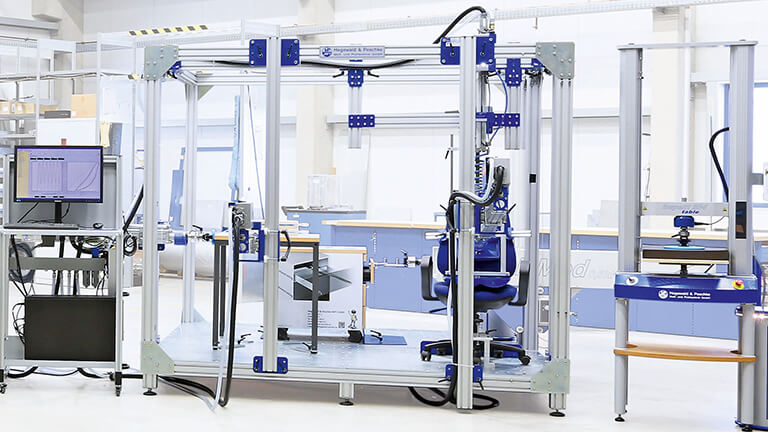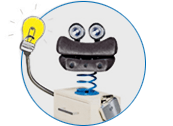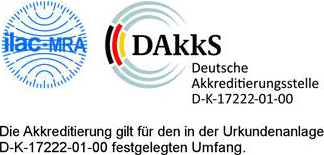Testing machine for battery cell testing
Universal testing machine for component testing in the electrical industry
Battery cells are the crucial component of electric cars. In everyday use, they are exposed to a wide range of electrochemical, thermal and mechanical stresses. In order to avoid hazards and ensure the quality, functionality and durability of the battery cells, its components are tested in complex test procedures.
Hegewald & Peschke offers a test system for testing battery cells which, in addition to an inspekt 100 kN universal testing machine, includes a special temperature chamber for simulating the ambient conditions. The testing machine is used to carry out compression tests to simulate mechanical loads on the battery cells caused by thermal effects and the installation situation. Compression plates simulate this load in the test system. By means of a cup bearing, the upper compression plate adapts to the test specimen and can also be fixed in the desired position. The test system is designed for a maximum load of 100 kN compressive load on the battery cells, although higher test loads can also be achieved by using a different testing machine.
Which test procedures are relevant for testing battery cells and how are these implemented in the test system?
The test system offers the option of applying 3 different types of load to the battery cells: thermal - via the temperature chamber, mechanical - via the testing machine and electrical - via the charging/discharging of the battery cell. Different test procedures can be carried out by modifying the individual loads.
At the beginning of a test sequence, the battery can be preloaded with a defined force by the testing machine. The temperature chamber regulates up to a temperature set in the software. Many charging cycles of the battery are then carried out one after the other. For example, the batteries are charged and discharged 10 times - at the same load and temperature. The next temperature and/or load is set afterwards.
The mechanical load can be applied in 3 different operating modes during the tests. One option is to hold the position of the compression plates, whereby the force increases when the cell expands and decreases again when it shrinks. In another test setting, the machine keeps the force constant so that the mechanical load on the battery always remains the same.
For the installation of battery cells in vehicles, springs are often used to compensate for the resulting forces. To consider this during the test, the effect of the springs can be simulated in the test system. In this case, the software LabMaster simulates the behavior of the testing machine as a spring with a specified spring constant. The effect on the battery cells thus corresponds to the installation in the vehicle in a frame with springs.
In all test procedures, the interaction of the 3 parameters temperature, state of charge and load as well as their effects on each other are always examined.
Testing software for testing battery cells
The material and component testing software LabMaster offers the flexibility to meet a wide range of requirements in a test procedure. As a result, the high demands placed on test procedures in battery cell testing can be performed reliably and reproducibly.
All system parameters are controlled centrally via a specially set up block program. The measured values of the external channels, such as charging voltage and cell temperature, are recorded via an analog signal and are available for evaluation in the test software. Error states, e.g. in the gas sensors, are also recorded and the reaction of the testing machine to alarms in the test procedure is controlled.
The individual steps in the test procedure can be configured very flexibly with the block program - they can be combined in any number and sequence with any parameters. If required, individual criteria can be defined for each step with regard to the parameters to be monitored.
To carry out long-term tests over several days, LabMaster has various options for effective data reduction. The test software records all measurement data from all connected systems every 20 milliseconds. During long tests, this leads to large amounts of data that are difficult to handle. This measurement data is therefore reduced to a reasonable amount by filtering out redundant values. The criteria for this can be adjusted separately for each test step so that exactly the data that is relevant for later evaluation is saved at all times.
Comprehensive safety concept for testing batteries
As the testing of battery cells involves an increased risk potential due to gases or escaping acids (EUCAR Hazard Level 6), special safety precautions must be taken. The temperature chamber, which can create temperature conditions between -40°C and +120°C, is therefore also equipped with gas sensors for O2, H2S, SO2, CO and H2. A status display with tower light signal provides constant information about the atmospheric condition in the temperature chamber. In addition to reaching the inert atmosphere, a pre-alarm is signaled when certain gas limit values are reached and a main alarm when these are exceeded. The main alarm then triggers an additional acoustic signal as well as an emergency purge with nitrogen. Furthermore, all systems are automatically stopped at this alarm level.
The temperature chamber is equipped with a frame-heated viewing window with 5-layer glazing with optical glass and a protective grille as splinter protection. A pressure relief flap ensures overpressure protection and overpressure equalization in the event of an accident. Connection to an exhaust air system and electrical locking of the chamber door prevent further risks.
This comprehensive safety concept protects against hazards such as breakage, fire, flying parts and loss of electrolyte (in accordance with hazard level 6).
Test solutions for battery cells and their components
In the specific test system, both individual cells and battery cell assemblies with an energy content of up to 10 kWh are tested. Hegewald & Peschke also offers further testing solutions for the various components and materials that are used to produce battery cells. With universal testing machines equipped for the specific test procedure, the following material tests and component tests can also be carried out: Tensile tests and puncture tests on electrode foils, adhesion tests on electrode coatings.
Test system for the analysis of battery cell composites for electric vehicles















